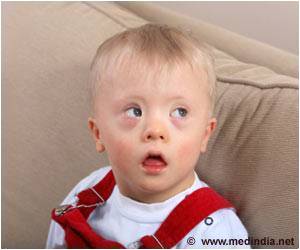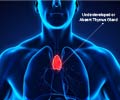Children suffering from the 22q11.2 deletion syndrome may be misidentified due to the social problems associated with their personality, which is also observed in autism patients

The researchers said the finding is important because treatments designed for children with autism, such as widely used discrete-trial training methods, may exacerbate the anxiety that is commonplace among the population.
Rather, evaluations should be performed to assess autism and guide the selection of appropriate therapies based on the children's symptoms, such as language and communication delay, the researchers said. The study, "Social impairments in Chromosome 22q11.2 Deletion Syndrome (22q11.2DS): Autism Spectrum Disorder or a different Endophenotype?" is published online today in Springer's Journal of Autism and Developmental Disorders.
A high prevalence of autism spectrum disorder has been reported in children with 22q11.2 deletion syndrome – as high as 50 percent based on parent-report measures. Children diagnosed with 22q11.2 deletion syndrome – or 22q – may experience mild to severe cardiac anomalies, weakened immune systems and malformations of the head and neck and the roof of the mouth, or palate. They also experience developmental delay, with IQs in the borderline-to-low-average range. They characteristically experience significant anxiety and appear socially awkward.
"The results of our study show that of the children involved in our study no child actually met strict diagnostic criteria for an autism spectrum disorder," said Kathleen Angkustsiri, study lead author and assistant professor of developmental-behavioral pediatrics at the MIND Institute.
"This is very important because the literature cites rates of anywhere from 20 to 50 percent of children with the disorder also have an autism spectrum disorder. Our findings lead us to question whether this is the correct label for these children who clearly have social impairments. We need to find out what interventions are most appropriate for their difficulties."
Advertisement
The risk of 22q is about 1 in 2000 in the general population. The condition is seen in individuals of all backgrounds. Notably, people with 22q are at significantly heightened risk of developing mental-health disorders in adolescence and young adulthood. A person with 22q has a 30 times greater risk of developing schizophrenia than individuals in the general population.
Advertisement
The study was conducted among individuals recruited through the website of the Cognitive Analysis and Brain Imaging Laboratory (CABIL), which Simon directs. Simon and Angkustsiri said that the parents of children with 22q deletion syndrome often had commented that their children "seemed different" from other children with autism diagnoses, but that they hadn't discovered a better diagnosis.
The clinical impression of the MIND Institute's 22q deletion syndrome team, which includes psychologists Ingrid Leckliter and Janice Enriquez, was that the children were experiencing significant social impairments, but their presentation diverged from that of children with autism. To determine whether the children met the criteria for classic autism, they decided to test a subset of the children recruited from participants in a larger study of neurocognitive functioning, based on stringent methods and using multiple testing instruments.
The researchers selected 29 children - 16 boys and 13 girls – for additional scrutiny, administering two tests. The Autism Diagnostic Observation Schedule (ADOS), a gold-standard assessment for autism, was administered to the children. The Social Communication Questionnaire (SCQ), a 40-question parent screening tool for communication and social functioning based on the gold-standard Autism Diagnostic Interview-Revised, was administered to their parents.
Typically, a diagnosis of autism spectrum disorder requires elevated scores on both a parent report measure, such as the SCQ, and a directly administered assessment such as the ADOS. Prior studies of autism in chromosome 22q11.2 deletion syndrome have only used parent report measures.
Only five of the 29 children had scores in the elevated range on the ADOS diagnostic tool. Four of the five had significant anxiety. Only two – 7 percent – had SCQ scores above the cut off. No child had both SCQ and ADOS scores in the relevant ranges that would lead to an ASD diagnosis.
"Over the years, a number of children came to us as part of the research or the clinical assessments that we perform, and their parents told us that they had an autism spectrum diagnosis. It's quite clear that children with the disorder do have social impairments," Simon said. "But it did seem to us that they did not have a classic case of autism spectrum disorder. They often have very high levels of social motivation. They get a lot of pleasure from social interaction, and they're quite socially skilled."
Simon said that the team also noted that the children's social deficits might be more a function of their developmental delay and intellectual disability than autism.
"If you put them with their younger siblings' friends they function very well in a social setting," Simon continued, "and they interact well with an adult who accommodates their expectations for social interaction."
Angkustsiri said that further study is needed to assess more appropriate treatments for children with 22q, such as improving their communication skills, treating their anxiety, helping them to remain focused and on task.
"There are a variety of different avenues that might be pursued rather than treatments that are designed to treat children with autism," Angkustsiri said. "There are readily available, evidence-based treatments that may be more appropriate to help maximize these children's potential."
Source-Eurekalert











